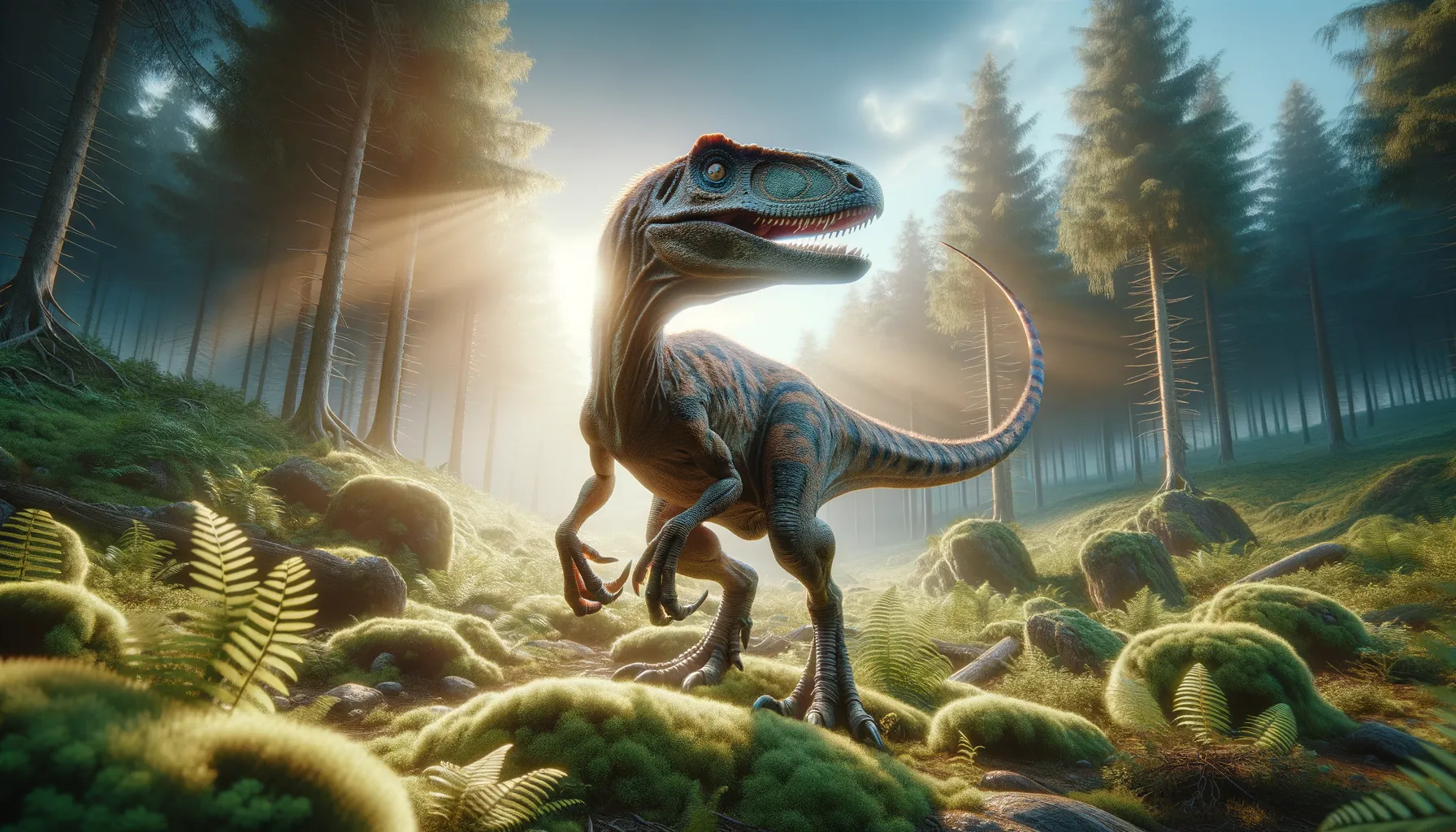
Pyroraptor
Swift and sly, the fire-born thief!
Period
Cretaceous
Length
About 1.5 to 2.5 meters from head to tail.
Height
Approximately 0.75 to 1 meter tall at the hip.
Weight
Around 15 kilograms or 33 pounds.
Pyroraptor was a small, agile predator known for its sharp claws and quick movements. Discovered in France, this dinosaur lived during the late Cretaceous period. Its name, meaning 'fire thief,' arises from its remains being uncovered after a forest fire. As a member of the dromaeosaur family, it shared similarities with the famous Velociraptor, including a sickle-shaped claw on each hindfoot.
Diet
Pyroraptor was a carnivore, primarily feeding on small animals. Its diet likely included small vertebrates, insects, and possibly scavenged remains.
Hunting
Pyroraptor used its agility and sharp claws to catch prey efficiently. The large sickle claw on its foot was a crucial tool for capturing and immobilizing its targets.
Environmental challenges
Living towards the end of the Cretaceous, Pyroraptor faced a dynamic and changing environment. Competing with larger predators meant it had to rely on speed and stealth. Natural disasters like floods or volcanic activity could have posed additional threats, influencing its survival strategies.
Speed
Pyroraptor was swift, thanks to its agile build.
Lifespan
Its lifespan is estimated to have been around 10 to 20 years.
First discovery
Discovered in southern France in 1992 after a forest fire.
Fun Facts
- Pyroraptor was a small, bird-like carnivorous dinosaur that lived about 70 million years ago during the Late Cretaceous period.
- Its name means 'fire thief,' inspired by the discovery of its fossils after a forest fire in southern France.
- Pyroraptor was part of the dromaeosaur family, known for their agility and distinctive sickle-shaped claws on each foot.
- This dinosaur was roughly the size of a large turkey, with estimates suggesting it was about 1.5 meters (5 feet) long.
- The Pyroraptor's feathers and lightweight body may have helped it maintain balance and agility while hunting.
- Despite its smaller size, Pyroraptor was a fierce predator, likely feeding on small mammals, reptiles, and other dinosaurs.
- Being one of the first dromaeosaurids discovered in Europe, Pyroraptor adds important clues about the diversity and distribution of feathered dinosaurs.
Growth and Development
As a dromaeosaur, Pyroraptor likely experienced rapid growth during its early life stages. Studies suggest that these dinosaurs grew quickly to compete for resources and avoid predation. Bone analyses can help determine age and growth patterns, offering insights into its life cycle.
Habitat
Pyroraptor inhabited forests and wetlands of what is now Europe during the late Cretaceous. These environments offered plenty of cover for hunting and nesting. The presence of diverse flora and fauna provided ample resources for survival.
Interaction with other species
As a predator, Pyroraptor interacted mainly with potential prey but also had to avoid larger carnivores. Its presence would have affected local ecosystems by controlling populations of smaller species. Cooperation or competition may have occurred with other small theropods.
Natural lifespan
Pyroraptor's natural lifespan likely ranged from 10 to 20 years.
Reproduction
Pyroraptor likely laid eggs, as is characteristic of theropods. It probably engaged in nesting behaviors, possibly in hidden or protected areas. Parental care might have been present, similar to some modern bird behaviors.
Social behaviour
It's possible that Pyroraptor displayed some social behavior, possibly hunting in packs like other dromaeosaurs. Social interaction could have included communication through vocalizations or physical gestures. However, solitary hunting was also likely, depending on prey availability.
Fossil locations
Pyroraptor remains have been found in the Provence region of southern France. This discovery was significant in understanding the distribution of dromaeosaurs in Europe. The fossils were unearthed from sedimentary rocks, indicating a once lush environment long lost to time.
